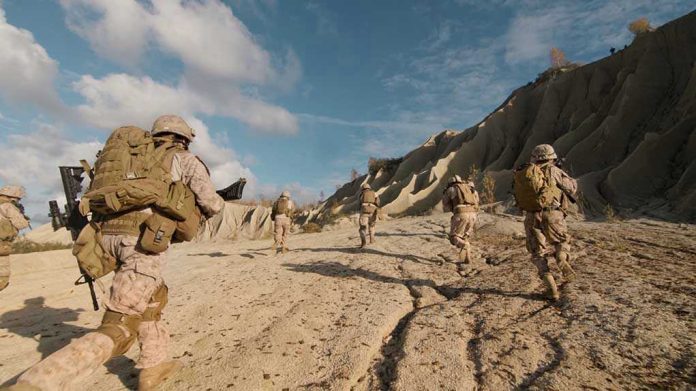
In the wake of a shocking security breach at Fort Stewart, the rapid and heroic action of unarmed soldiers prevented what could have been a far greater tragedy—while raising urgent questions about military base safety and firearm policies.
Story Snapshot
- Army Sergeant Quornelius Radford allegedly shot five fellow soldiers with a personal handgun at Fort Stewart, Georgia.
- Unarmed soldiers intervened, stopping the attack and providing lifesaving aid before military police arrived.
- All victims survived and are expected to recover; the motive remains unknown as investigations continue.
- The incident exposes vulnerabilities in base security protocols and prompts calls for policy review regarding personal firearms and mental health support in the military.
Fort Stewart Shooting: Facts and Immediate Response
On August 6, 2025, Sergeant Quornelius Radford, a 28-year-old automated logistics sergeant, allegedly opened fire with his personal handgun at the 2nd Armored Brigade Combat Team area of Fort Stewart, Georgia. The attack occurred within a secure workplace environment, wounding five fellow soldiers. Military police apprehended Radford within 40 minutes, and all victims were transported to medical facilities where they are now in stable condition. Immediate intervention by unarmed soldiers was pivotal, as their quick response both subdued the shooter and provided essential first aid, directly contributing to the victims’ survival.
Military authorities commended the heroism displayed by these soldiers, with both Brigadier General John Lubas and Army Secretary Daniel Driscoll publicly crediting their actions for saving lives. The base lockdown was lifted soon after the incident, and normal operations have since resumed. This event spotlights both the dangers of workplace violence—even in highly regulated military settings—and the crucial role of readiness and peer intervention in crisis situations.
Security Protocols and Firearm Policy Under Scrutiny
The incident raises concerns about how an active-duty soldier could bring a personal firearm onto a military installation with strict security protocols. While military personnel may possess legally registered personal guns, regulations tightly restrict how these weapons may be brought onto base property. The ongoing investigation seeks to determine whether any security lapses or failures in protocol enabled Radford’s actions. Previous shootings at U.S. military bases, such as Fort Hood in 2009 and 2014, have prompted reviews of access controls and mental health support, but the Fort Stewart case highlights persistent vulnerabilities that may require further action to safeguard service members’ lives.
No prior public disciplinary or behavioral issues have been reported regarding Radford as of August 7, 2025. The motive for the shooting remains unknown and is a focal point of the ongoing investigation. Army officials have emphasized transparency and support for affected personnel, reiterating their commitment to both accountability and the wellbeing of the Fort Stewart community.
Impact on Military Policy, Personnel, and National Security
The shooting’s aftermath is likely to prompt significant short-term and long-term policy discussions. In the immediate term, Fort Stewart and the broader Army are increasing security measures and scrutinizing personal firearm policies. The incident also underscores the need for enhanced mental health resources and workplace safety initiatives across the military. All five victims, their families, and colleagues are directly affected, but the shockwaves extend to the broader Army community and the American public, renewing concerns about violence and safety even in secure institutions.
Economically, costs are expected for medical care, security upgrades, and investigative processes. Socially, the shooting highlights the ongoing challenge of workplace violence and the importance of mental health support for service members. Politically, calls may arise for stricter regulations on firearm access within military installations, though any such policy changes must be carefully balanced to respect both service members’ constitutional rights and the imperative of collective security.
Who is Quornelius Radford? The Army sergeant accused of shooting 5 soldiers at Fort Stewart in Georgia https://t.co/3EPY0jiNFa #FoxNews
— MATT (@MATTHILGER1) August 7, 2025
Expert perspectives emphasize the effectiveness of peer intervention and trauma care, crediting Army readiness and training for preventing fatalities. Nonetheless, the absence of a clear motive and the method by which the firearm entered the base leave unresolved questions that demand thorough review. As the investigation continues, military leadership faces the challenge of restoring confidence in base security and demonstrating that the lessons of Fort Stewart will lead to real reforms—rather than bureaucratic delays or overreach that could undermine constitutional protections or erode morale among the nation’s defenders.
Sources:
Active shooter incident, casualties reported at Fort Stewart, Georgia – ABC News
Fort Stewart soldiers ‘absolutely saved lives’ by jumping into action to stop shooter – ABC News














